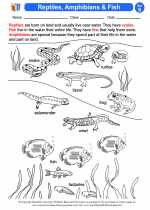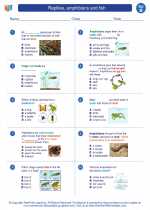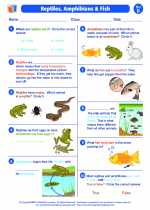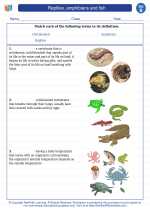Reptiles, amphibians and fish -> bryophytes
Bryophytes
Bryophytes are a group of non-vascular plants that include mosses, liverworts, and hornworts. They are some of the most primitive plants on Earth and play important roles in the environment.
Characteristics of Bryophytes:
- Non-vascular: Bryophytes lack specialized tissues for transporting water and nutrients.
- Small size: They are typically small and grow close to the ground.
- Moist environments: Bryophytes require moist environments for reproduction and growth.
- Reproduction: They reproduce using spores and have a life cycle that involves alternation of generations.
Types of Bryophytes:
There are three main groups of bryophytes:
- Mosses: Mosses are found in various habitats and are characterized by their small leaf-like structures. They play important roles in soil formation and moisture retention.
- Liverworts: Liverworts are small, flat plants that often grow in damp, shady places. They are important in preventing soil erosion.
- Hornworts: Hornworts are named for their horn-shaped sporophytes. They are often found in moist environments and contribute to nutrient cycling in ecosystems.
Importance of Bryophytes:
Bryophytes have several ecological and practical importance:
- They help in retaining moisture and nutrients in the soil.
- They contribute to the formation of peat, which has been traditionally used as a fuel source.
- They are important for biodiversity as they provide habitats for small organisms.
Study Guide:
When studying bryophytes, it's important to focus on their characteristics, life cycle, and ecological roles. Here are some key points to include in your study guide:
- Define bryophytes and explain their non-vascular nature.
- Describe the life cycle of bryophytes, including the alternation of generations.
- Identify and describe the three main groups of bryophytes (mosses, liverworts, hornworts).
- Explain the ecological importance of bryophytes in soil formation, nutrient cycling, and biodiversity.
- Discuss the practical uses of bryophytes, such as in traditional fuel sources.
By understanding these key points, you will have a solid grasp of the significance of bryophytes in the natural world.
[Bryophytes] Related Worksheets and Study Guides:
.◂Science Worksheets and Study Guides Second Grade. Reptiles, amphibians and fish
Study Guide Reptiles, amphibians and fish
Reptiles, amphibians and fish  Activity Lesson
Activity Lesson Reptiles, Amphibians & Fish
Reptiles, Amphibians & Fish  Worksheet/Answer key
Worksheet/Answer key Reptiles, amphibians and fish
Reptiles, amphibians and fish  Worksheet/Answer key
Worksheet/Answer key Reptiles, amphibians and fish
Reptiles, amphibians and fish  Worksheet/Answer key
Worksheet/Answer key Reptiles, amphibians and fish
Reptiles, amphibians and fish  Worksheet/Answer key
Worksheet/Answer key Reptiles, Amphibians and Fish
Reptiles, Amphibians and Fish  Vocabulary/Answer key
Vocabulary/Answer key Reptiles, amphibians and fish
Reptiles, amphibians and fish 

 Activity Lesson
Activity Lesson
 Worksheet/Answer key
Worksheet/Answer key
 Worksheet/Answer key
Worksheet/Answer key
 Worksheet/Answer key
Worksheet/Answer key
 Worksheet/Answer key
Worksheet/Answer key
 Vocabulary/Answer key
Vocabulary/Answer key

The resources above cover the following skills:
LIFE SCIENCE (NGSS)
Ecosystems: Interactions, Energy, and Dynamics
Students who demonstrate understanding can:
Plan and conduct an investigation to determine if plants need sunlight and water to grow.